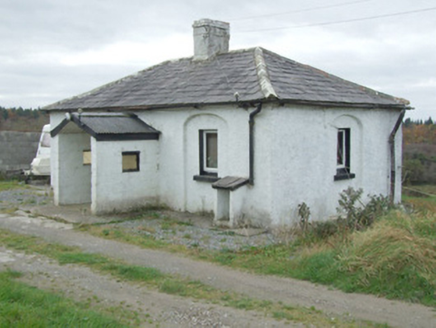Survey Data
Reg No
13402224
Rating
Regional
Categories of Special Interest
Architectural, Technical
Previous Name
40th Lock
Original Use
Lock keeper's house
Date
1810 - 1820
Coordinates
212702, 258631
Date Recorded
17/04/2009
Date Updated
--/--/--
Description
Detached three-bay single-storey lock keeper's house, built 1815, with open single-bay single-storey porch to the centre of the main elevation (east). Hipped natural slate roof with central rendered chimneystack and cut stone eaves course. Roughcast rendered finish over dressed squared limestone rubble walls. Square-headed window openings, set in recessed segmental-headed arches, with cut stone sills and replacement windows. Central square-headed doorway to porch having modern door. Located adjacent to associated lock at Mullawornia (13402223), and to the southwest of Barry. Royal Canal (main branch) to the east.
Appraisal
This charming early nineteenth-century lock keeper's house retains its early character, form and fabric despite some alteration and the construction of an entrance porch to the front elevation. The modest form of this building is enhanced by the recessed arches containing the openings, which helps to give this appealing structure a formal architectural quality. Blind recessed arches were commonly employed as architectural motifs in canal architecture, particularly in the lock keeper's houses of canal architect Thomas Omer. The quality of the construction is indicative of the grandiose ambitions of the Directors General of Inland Navigation (who took over responsibility for the Royal Canal following the dissolution of the Royal Canal Company in 1813) during the early part of the nineteenth century. Constructed by a single authority, it is not surprising that lock keeper's houses along the Royal Canal follow a standard plan. It forms part of a pair of related structures along with the associated lock to the northeast (13402223). It was probably built to designs by John Killaly (1766 – 1832), the engineer responsible for the construction of the Royal Canal. This group of canal structures is an important reminder of the optimism and industriousness of the canal building era prior to the demise of this transport system in the mid-to-late nineteenth century.

